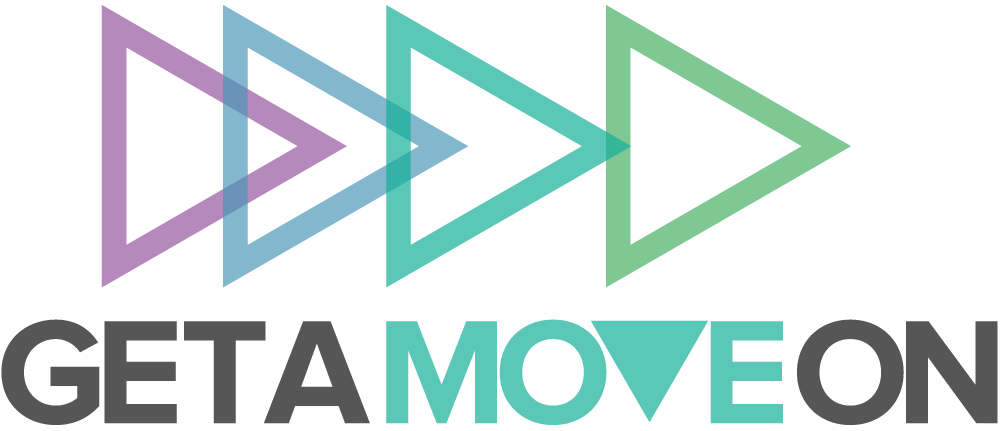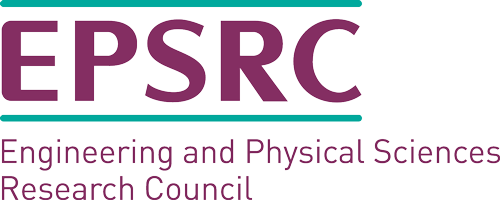Tackling sedentarism - the new smoking
Launch of the GetAMoveOn Network
Sedentarism: the new smoking
We all know the benefits of moving more, but now more than ever we are witnessing the dangers of our sedentary lifestyles. Sedentarism is the ‘new smoking’. From mobile apps to ever-more sophisticated activity trackers, technology has given rise to an array of tools that enable us to monitor our own health and motivate healthier lifestyles. While these have been enthusiastically adopted by a health-aware minority, they have failed to address the health issues of the general population. With the launch of Get A Move On we are seeking to change that.
GetAMoveOn is an EPSRC Healthcare Technologies Grand Challenges Networks Plus award which will bring together digital and data experts with experts in sports and behavioural psychology, in one network. This will enable us to harness the latest technological knowledge to work with the most critical groups - older adults, schoolchildren and people at work – to create some truly innovative digital tech that can motivate and change people’s health for the long term.
Why focus on 'movement'?
When we move more, we become smarter; as we become stronger, chronic pain decreases. Greater movement, especially in social contexts, improves collaboration. Movement also complements other functions such as improved sleep, memory and cognition, diet and associated hormones, improving insulin sensitivity, balancing cortisol and improving outcomes for dementia patients.
We have chosen to focus on movement as a locus for health as it drives so many other benefits that are of value: economically, socially and cultural. In fact, it is actually these ‘side effects/ side benefits’ of exercise that we believe to be the key to motivating different sections of population to move more. The majority of people may not be motivated by the call simply to ‘move more’, but they do want things like better physical health, mood, sleep and memory. By using technology to demonstrate the physical, emotional, cognitive and social (PECS) value of movement, it will provide the motivation to exercise in the long term.
What’s the business case?
Costs to UK GDP from sedentarism and associated disease are increasing - from sick days lost to work, to elders losing mobility and having to move into care homes.
- Physical inactivity is the fourth leading cause of death worldwide, being responsible for approximately 3.2 million deaths each year [20].
- Sedentary behaviours, such as sitting at a desk all day, have been found to have additional negative physiological consequences [17] linked to the risk of chronic disease.
- In the UK, 1 in 4 of the adult population is classed as physically inactive, suffering from increased risk of up to twenty chronic diseases including heart disease, type 2 diabetes and high blood pressure [4].
- Encouraging and maintaining regular levels of activity can not only help lower mortality rates and improve fitness but can also positively influence mental health and wellbeing.
- It is also estimated that reducing inactivity by just one per cent a year could save local authorities £1.2 billion, over a 5 year period [18].
What’s wrong with current approaches and technologies?
While we understand the potential technologies, we do not yet know how to leverage the technology effectively to support transformative health. Current approaches in ehealth generally only reach a small part of the population that is already interested in fitness and personal data capture. Previous approaches can be criticised for failing to account for the needs of different users [1] and for focusing on measures that reinforce a narrow conception of what it means to be healthy or fit.
To the best of our knowledge there have not been any attempts to develop technological interventions that motivate physical activity by highlighting the emotional and cognitive benefits. However, although there is some evidence that systems that promote social interaction can be effective at motivating people to increase levels of activity, existing systems effectively support those who are already motivated to monitor and maintain active behaviours, but fail to motivate non-active users to increase activity levels.
Thus, despite much excellent work focused on increasing the technical efficacy of existing solutions, we are without a comprehensive understanding of how to effectively use ubiquitous technologies to motivate and engage large numbers of people to increase their levels of physical activity over the long term. Without such an understanding, we are left with technologies that fail to increase levels of physical activity across the populace and so fail to address the societal problems caused by physical inactivity.
So what’s new about the GetAMoveOn approach?
The focus of our network on performance, rather than prevention, represents a transformative paradigm shift for movement-based health and wellbeing. Our thesis is that combining community-based and value-led approaches to identifying the PECS outcomes that are engaging and motivating, could lead to the design of technologies that effectively support large numbers of people to live more active lives.
What’s innovative about the Network?
We require truly multi-disciplinary research on novel technical solutions, supported by theories from sports and health sciences on blending appropriate movement strategies for particular performance aspirations, and behavioural and cognitive sciences on ways to engage people to make effective and meaningful progress.
By bringing together researchers from multiple disciplines, working with critical age groups for health interventions, from schools, to workplaces, to older adults in care, this project creates a network ideally situated to undertake this radical re-imagining of health support.
Interested? Join us!
Are you an academic researcher – especially in health, psychology or computer science? A policy maker? Do you work in a school, a community of older adults, a business or other organisational setting?
Are you interested in how technology can be used to encourage people to move more?
Then please join our network and subscribe to our regular newsletter here
References
-
Baumer, E. P. S., Katz, S. J., Freeman, J. E., et al (2012). Prescriptive Persuasion and Openended
Social Awareness: Expanding the Design Space of Mobile Health. In Proc. of the ACM
2012 Conference on Computer Supported Cooperative Work (pp. 475–484).
https://experts.umn.edu/en/publications/prescriptive-persuasion-and-open-ended-social-awareness-expanding -
Carvalho, A., Rea, I. M., Parimon, T., & Cusack, B. J. (2014). Physical activity and cognitive
function in individuals over 60 years of age: a systematic review. Clinical Interventions in Aging, 9,
661–682.
Case For Support
http://pure.qub.ac.uk/portal/files/9592882/f_CIA_55520_physical_activity_
and_cognitive_function_in_individuals_over_041214_19655.pdf -
Clawson, J., Pater, J. A., Miller, A. D., Mynatt, E. D., & Mamykina, L. (2015). No Longer Wearing:
Investigating the Abandonment of Personal Health-tracking Technologies on Craigslist. In Proc.
ACM International Joint Conference on Pervasive and Ubiquitous Computing (pp. 647–658).
https://research.cc.gatech.edu/ecl/projects/technology-abandonment -
Department of Health, Start Active, Stay Active: A Report on Physical Activity from the Four
Home Countries’ Chief Medical Officers (2011). Accessed from: http://bit.ly/1LmuPJL
http://www.britishjournalofobesity.co.uk/journal/2015-1-4-164 -
Epstein, D. A., Jacobson, B. H., Bales, E., McDonald, D. W., & Munson, S. A. (2015). From
“Nobody Cares” to “Way to Go!”: A Design Framework for Social Sharing in Personal Informatics.
In Proc. ACM Computer Supported Cooperative Work & Social Computing (pp. 1622–1636).
http://www.depstein.net/pubs/depstein_cscw15.pdf -
Fox, K. R. (1999). The influence of physical activity on mental well-being. Public Health Nutrition,
2(3a), 411–418. https://www.ncbi.nlm.nih.gov/pubmed/10610081 -
Fritz, T., Huang, E. M., Murphy, G. C., & Zimmermann, T. (2014). Persuasive Technology in the
Real World: A Study of Long-term Use of Activity Sensing Devices for Fitness. In Proc. SIGCHI
Conference on Human Factors in Computing Systems (pp. 487–496).
http://thomas-zimmermann.com/publications/files/fritz-chi-2014.pdf -
Gerling, K., De Schutter, B., Brown, J., & Allaire, J. (2015). Ageing playfully: advancing research
on games for older adults beyond accessibility and health benefits. ACM SIGCHI Annual
Symposium on Computer-Human Interaction in Play (CHI PLAY).
http://eprints.lincoln.ac.uk/18323/1/CHI%20PLAY%20Workshop%20Games%20for%20Older%20Adults_camera-ready_submitted%20060815.pdf -
Graves, L. E. F., Ridgers, N. D., Williams, K. L., et al. (2010). The physiological cost and
enjoyment of Wii Fit in adolescents, young adults, and older adults. Journal of Physical Activity &
Health, 7(3), 393–401.
http://journals.humankinetics.com/doi/abs/10.1123/jpah.7.3.393?journalCode=jpah -
MacVean, A., & Robertson, J. (2013). Understanding Exergame Users’ Physical Activity,
Motivation and Behavior over Time. In Proc. SIGCHI Conference on Human Factors in Computing
Systems (pp. 1251–1260).
http://dl.acm.org/citation.cfm?id=2466163 -
Miller, A. D., & Mynatt, E. D. (2014). StepStream: A School-based Pervasive Social Fitness
System for Everyday Adolescent Health. In Proc, ACM Human Factors in Computing Systems (pp.
2823–2832). https://research.cc.gatech.edu/ecl/sites/edu.ecl/files/2014_Miller-temp.pdf -
Paluska, D. S. A., & Schwenk, T. L. (2012). Physical Activity and Mental Health. Sports Medicine,
29(3), 167–180.
https://www.ncbi.nlm.nih.gov/pubmed/10739267 -
Pepping, G.-J., & Timmermans, E. J. (2012). Oxytocin and the Biopsychology of Performance in
Team Sports. The Scientific World Journal, 2012.
https://www.ncbi.nlm.nih.gov/pmc/articles/PMC3444846/ -
Purpura, S., Schwanda, V., Williams, K., Stubler, W., & Sengers, P. (2011). Fit4Life: The Design of
a Persuasive Technology Promoting Healthy Behavior and Ideal Weight. In Proc of the SIGCHI
Conference on Human Factors in Computing Systems (pp. 423–432).
http://dl.acm.org/citation.cfm?id=1979003 -
Schraefel, M. C. (2014). Burn the Chair, We’Re Wired to Move: Exploring the Brain/Body
Connexion for HCI Creativity & Cognition. In Proc. of HCI Korea (pp. 153–161).
http://dl.acm.org/citation.cfm?id=2729485.2729509 -
Singh, A., Klapper, A., Jia, J., et al. (2014). Motivating People with Chronic Pain to Do Physical
Activity: Opportunities for Technology Design. In Proc. ACM Human Factors in Computing
Systems (pp. 2803–2812).
http://dl.acm.org/citation.cfm?id=2557268 http://bmjopen.bmj.com/content/6/1/e009544.full.pdf -
Tremblay, M.S., Colley, R., Saunders, T.J., Healy, G.N., and Owen, N. 2010. Physiological and
health implications of a sedentary lifestyle. Applied Physiology, Nutrition, and Metabolism 35, 6,
725–740.
https://www.ncbi.nlm.nih.gov/pubmed/21164543 -
UK Active, (2014). Turning the tide of physical inactivity.
-
http://ukactive.com/downloads/managed/Turning_the_tide_of_inactivity.pdf
http://www.ukactive.com/policy-insight/turning-the-tide-of-inactivity -
Warburton, D. E. R., Nicol, C. W., & Bredin, S. S. D. (2006). Health benefits of physical activity: the
evidence. CMAJ : Canadian Medical Association Journal, 174(6), 801–809.
http://www.cmaj.ca/content/174/6/801.abstract -
World Health Organisation (2012). Assessing national capacity for the prevention and control of
NCDs: report of the 2010 global survey. http://www.who.int/chp/knowledge/national_prevention_ncds/en/ -
Zhu, N., Diethe, T., Camplani, M., et al. (2015). Bridging e-Health and the Internet of Things: The
SPHERE Project. IEEE Intelligent Systems, 30(4), 39–46.
http://research-information.bristol.ac.uk/en/publications/
bridging-ehealth-and-the-internet-of-things(c3334ae0-52e3-459b-ba94-6f6a7966a1ef).html







